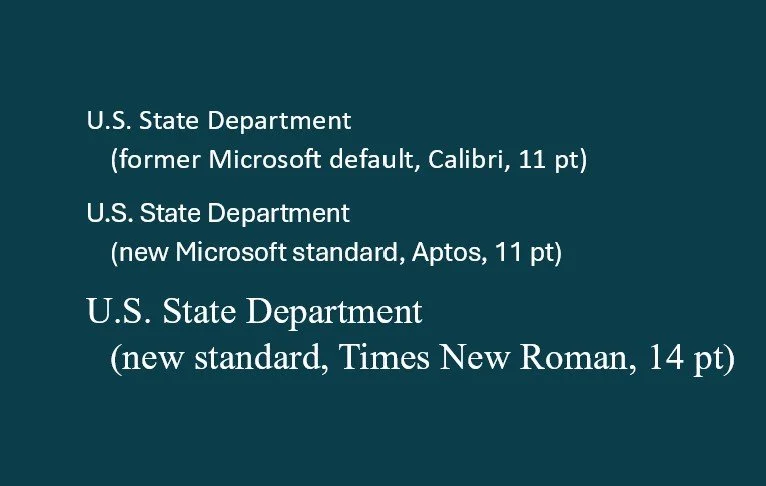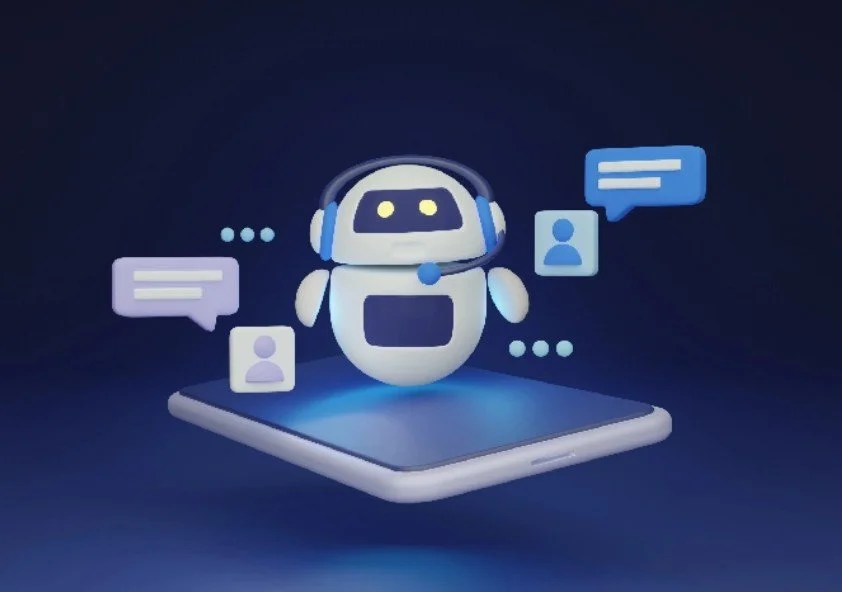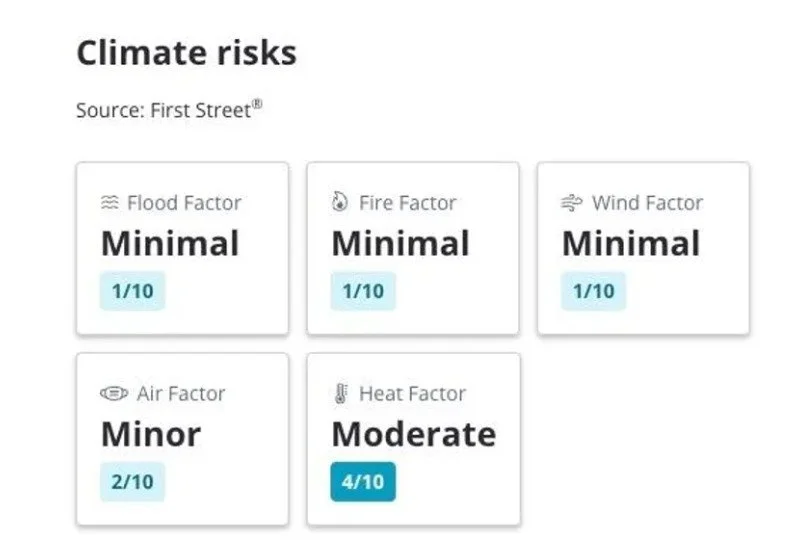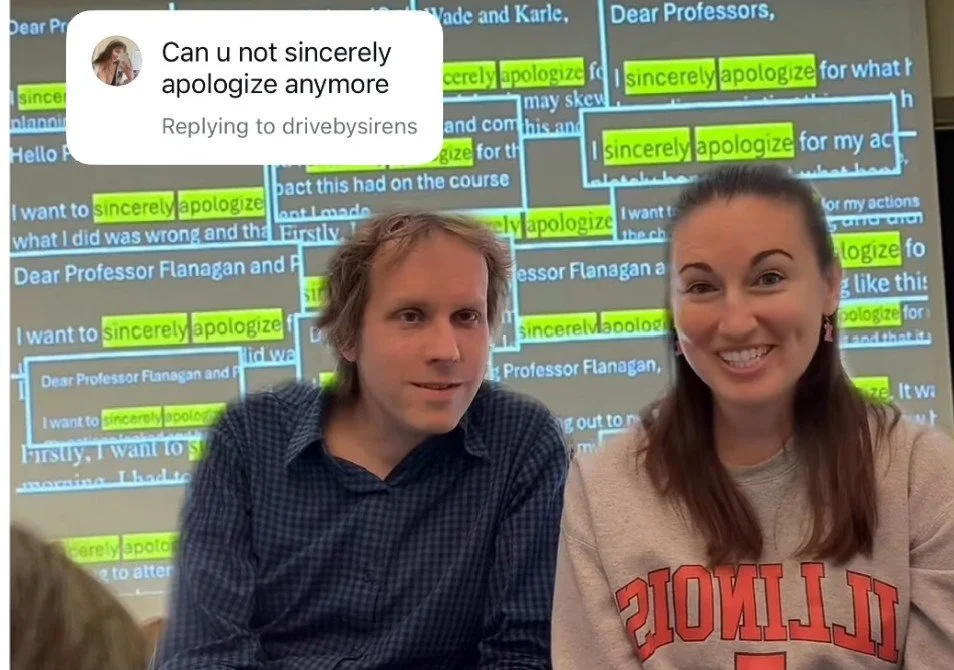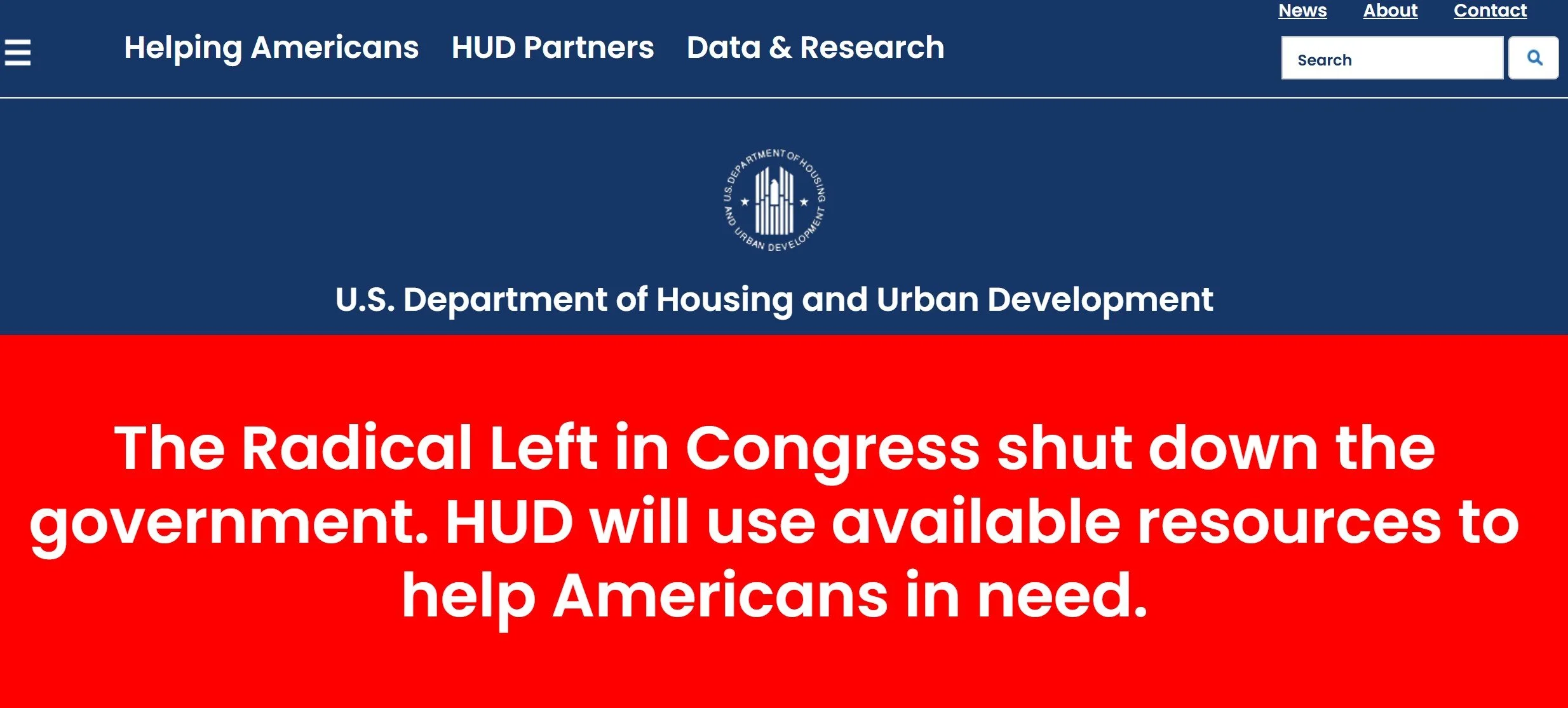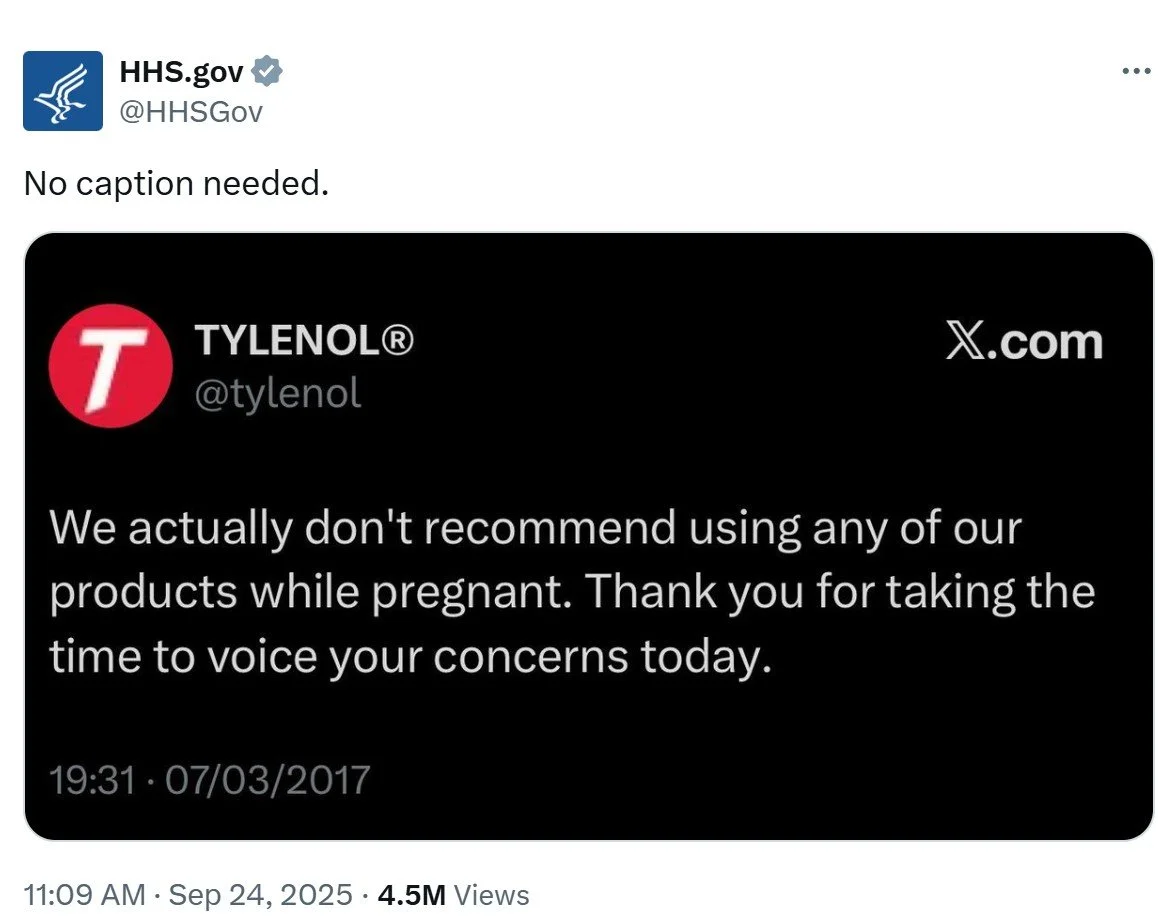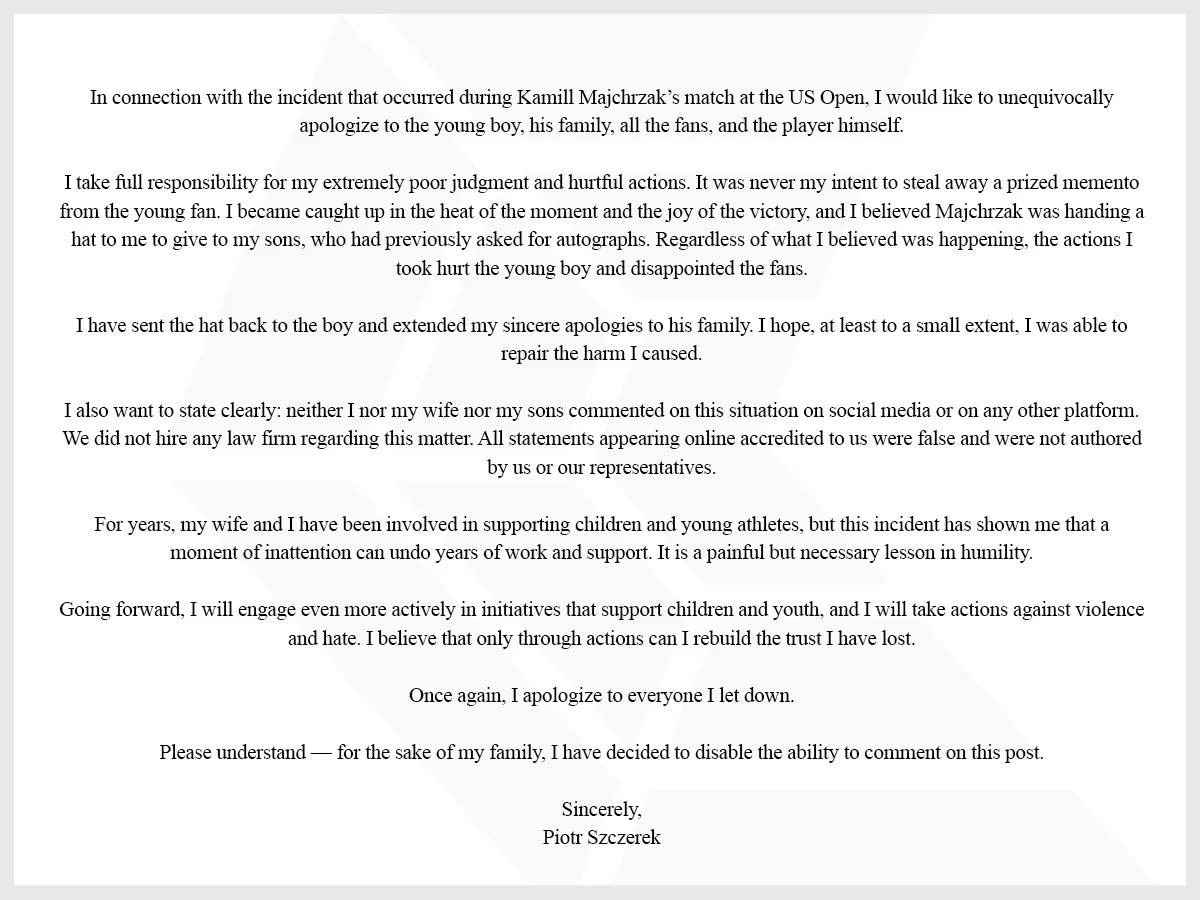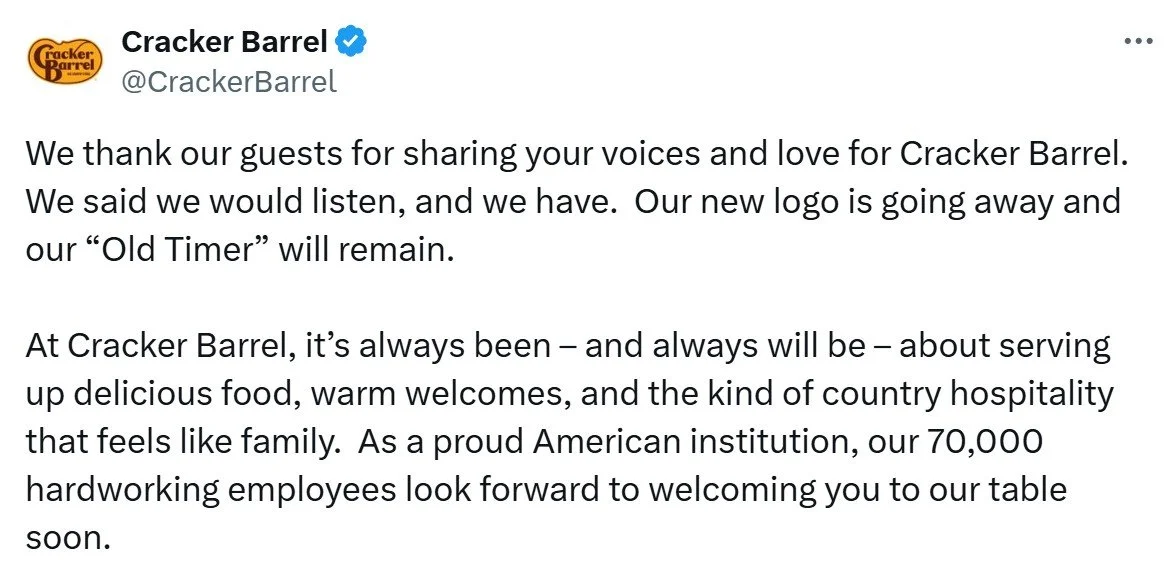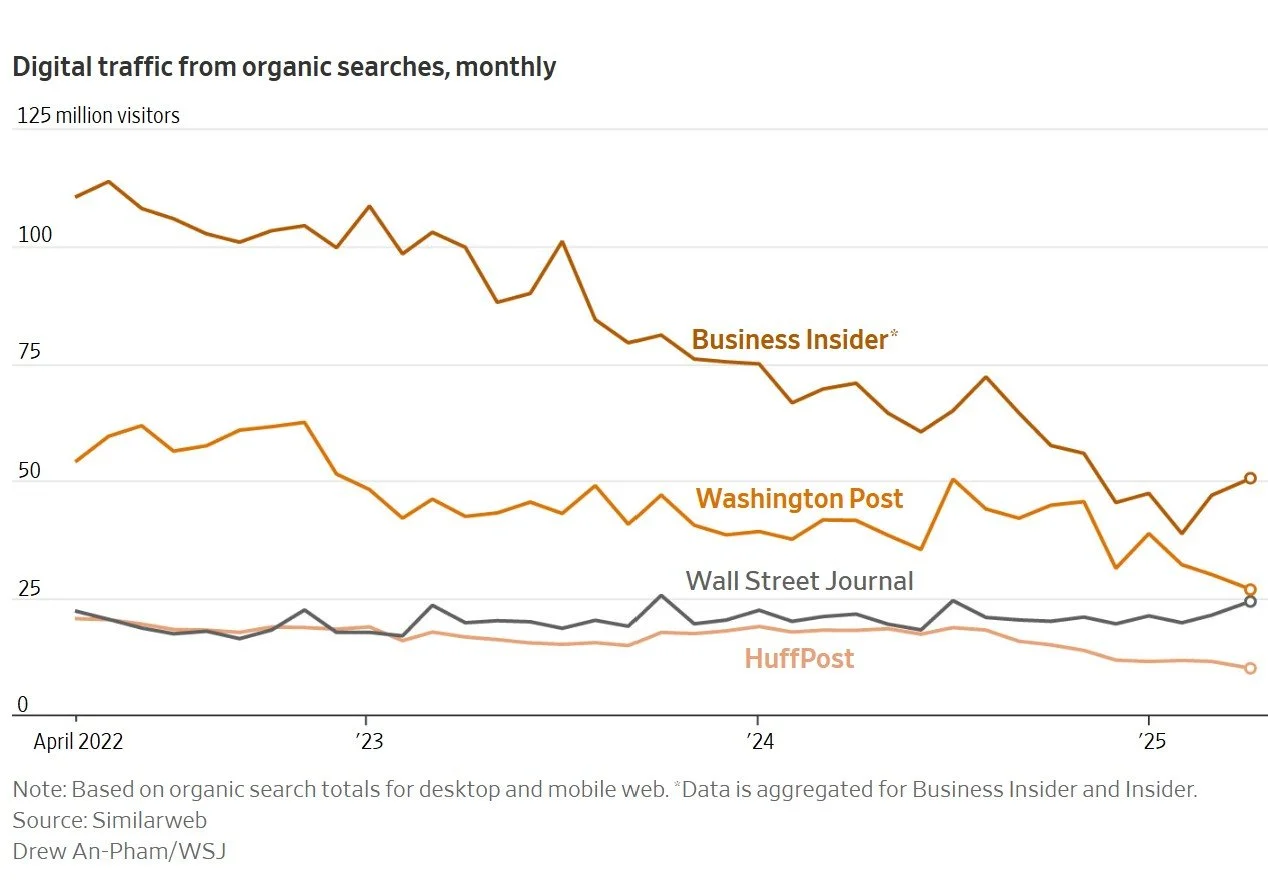Calibri Oust Offers a Lesson in Typeface and Analyzing Claims
The U.S. State Department demanded that agencies revert back to Times New Roman (14-point font!) instead of Calibri, offering an opportunity for students to learn the difference and the value of each. In a cable, Secretary of State Marco Rubio cites the importance of “a unified, professional voice in all communications,” the “tradition, formality, and ceremony” of serif fonts, and “yet another wasteful DEIA program,” that is, the switch to a sans serif font to increase accessibility. Without the flourishes (little legs) of serif fonts, sans serif fonts may be more easily read by people with low vision, dyslexia, and other disabilities.
Students can analyze Rubio’s argument. One claim is that changing from Calibri back to Times New Roman “did not lead to a meaningful reduction in the department's accessibility-based document remediation cases.” They might question whether remediation—changes to documents—is that best way to measure success. Most often read on screens, what does the research say about serif and sans serif fonts? In addition, he doesn’t include the cost of what news reporters called an “about face.”
Rubio also argues for consistency with letterhead, but that could be modernized. Finally, what’s the value of what he refers to as “decorum” and “professionalism,” terms that have connotations of their own?
Poor Calibri. First replaced, after a 17-year run as Microsoft’s default font by taller, curvier Aptos, and now this.
Chatbots for Persuasive Arguments
New research show how GenAI sways political opinions. Students can discuss the strategies AI tools use and opportunities for their own persuasive arguments, while considering ethical issues and potential misinformation.
Research published in Science concludes,
When AI systems are optimized for persuasion, they may increasingly deploy misleading or false information. This research provides an empirical foundation for policy-makers and technologists to anticipate and address the challenges of AI-driven persuasion, and it highlights the need for safeguards that balance AI’s legitimate uses in political discourse with protections against manipulation and misinformation.
In an article in Nature, the authors write,
Examining the persuasion strategies used by the models indicates that they persuade with relevant facts and evidence, rather than using sophisticated psychological persuasion techniques. Not all facts and evidence presented, however, were accurate; across all three countries, the AI models advocating for candidates on the political right made more inaccurate claims.
Students might discuss how they can use a chatbot for their business arguments. For example, in what circumstances, might encouraging people to search for their own answers through an AI tool be more effective or more practical than presenting an argument? These studies recognize the value of unleashing a massive amount of evidence that students might not have at their fingertips. In addition, inviting people to converse with a chatbot allows them to ask unfiltered questions, avoiding fear of judgment.
An interesting class activity could involve a short student presentation with individual chatbot time following, either to replace or precede a Q&A session. Then, potential misinformation can be explored as a class.
Netflix Announces Warner Bros. Acquisition
The acquisition called an “unprecedented threat to the global exhibition business” is getting surprisingly little communication from Netflix, the acquirer. This situation illustrates positive news that is also persuasive, trying to convince readers that the business decision is a sound one.
In an email to subscribers, “Welcoming Warner Bros. to Netflix,” the company says little. The emphasis is on nothing changing at the moment, but the merging of media and genre is jarring: Casablanca, Game of Thrones, and KPop Demon Hunters in one breath and “TV shows, movies, games, and live programming” in another.
Company leaders express more excitement in the news release. At the top, all criticism seems to be addressed with the promises of increased customer value and, sounding vague but confident, greater opportunities for creatives and a stronger entertainment industry.
Transaction Unites Warner Bros.’ Iconic Franchises and Storied Libraries with Netflix’s Leading Entertainment Service, Creating an Extraordinary Offering for Consumers
Netflix to Maintain Warner Bros.’ Current Operations
Combination Will Offer More Choice and Greater Value for Consumers, Create More Opportunities for the Creative Community and Generate Shareholder Value
Acquisition Will Strengthen the Entertainment Industry
Students might analyze these claims against criticism of the acquisition. Critics argue potentially higher prices for consumers, fewer jobs because of consolidation, the death of movie theaters—and an antitrust violation.
A search of my inbox revealed this 2011 email from Reed Hastings about spinning off the mailed DVD business. What a quaint, simple time that was, when the CEO signed his own emails, acknowledged members who felt “we lacked respect and humility,” and apologized for a small, but deeply felt change.
Analyzing an Opinion About Climate Disclosure
Students can analyze and debate an argument that Zillow should include climate risks on real estate listings. The situation raises questions about integrity—transparency in communication and consistency.
In an opinion letter, a nonprofit climate marketing executive argues that, despite pressure, Zillow should reinstate information about flood, wildfire, air-quality, and other home risks (shown here). Critics (mostly realtors and home sellers) argue that disclosures affect home prices.
This situation is ripe for student analysis and research. They might pursue questions such as the following:
Do home buyers want to know climate risks of homes for sale? What do they say are the reasons and how the information might affect home buying decisions?
Related to the first question: What is the reality? How does knowledge of climate risk affect home prices and home purchases? For example, how does location factor in, for example, whether people are looking locally or nationally?
Should home sellers be required to disclose climate risks? What are the ethical arguments of disclosure from the sellers’ perspective? How does this argument balance the consumer’s right to know?
Research mandated disclosures by U.S. state.
Zillow’s information, from the risk-modeling company First Street, has been questioned. How can we measure the quality of the data?
What are the strongest and weakest arguments in the opinion piece?
How does the opinion writer use logical arguments, emotional appeal, and credibility to persuade the reader?
To what extent does displaying or removing climate risk information align with or contradict Zillow’s mission? How is this a potential issue of integrity?
These assignments involve ethics, integrity, data, and persuasive communication. Students also might be interested in this topic for their own future—whether they buy or rent in an area vulnerable to climate events.
Faculty Respond to Students’ AI-Generated Apology
Students at the University of Illinois Urbana-Champaign sent a similar AI-generated apology to their faculty. Let’s look at the communications about the situation, including the faculty members’ response.
Accused of cheating and falsifying their class attendance in their introductory data science class, dozens of students (faculty say about 80% of more than 100) wrote something similar, including “sincerely apologize.” The faculty showed a slide in class with the repeated phrase, and then the story spread. In a video on Instagram, the faculty describe the situation. It’s lighthearted, and students weren’t disciplined. A New York Times article explains a lack of AI policy—and, based on the faculty response, they seem unlikely to punish students, anyway.
I wish I found this story funnier, but I think it’s sad.
In the upcoming 12th edition of Business Communication and Character, I offer advice for working with AI in ways that reflect well on students’ character. I suggest, “Write important and sensitive messages in your own voice.” Later in the book, I offer suggestions for making a sincere apology. I know many business communication faculty teach these principles, which students either aren’t exposed to or may not put into practice.
An apology is not difficult to write if it is truly sincere. These examples aren’t. Why would students—just caught in a lie—suddenly be sorry? An apology requires self-reflection, which in turn, requires time.
Maybe what bothers me most is how little thought students seem to put into both the apology and the class. At the end of the NYT article, a recent graduate who found the first-year class useful is quoted:
You’re not even coming to the class, and then you can’t even send a sincere email to the professor saying, ‘I apologize’? Out of any class at the university, why skip that one?
I think the answer is, because they can. Business communication faculty I know have clearer expectations for their courses and for their students, including how they use AI. I also hope we expect an honest, personal apology. It’s not too late for these students to reflect on their behavior.
Layoffs and Private Jets: Integrity Issue?
A Wall Street Journal article describes a lack of consistency, which students might identify as an integrity issue: employees are laid off while companies increase use of private jets for executives. Students may analyze the reasons provided and draw their own conclusions.
Although other executive perks have declined, private flights have increased 76.7% since 2020. The WSJ article cites safety as the most common justification, with the murder of UnitedHealth CEO Brian Thompson as an example.
The National Business Aviation Association (NBAA) helps companies with proactive messaging. A long webpage is titled, “Toot Your Own Horn: Bizav [business aviation] Operators Tell Their Own Stories,” with the subtitle, “The value of building a proactive internal campaign to support your flight operation.” Although we’re seeing more external criticism, the article focuses on internal communication:
Business aviation is often misrepresented in the mainstream media, cast as a villain for the sake of a soundbite. Are you prepared to share the value your flight department brings to the company and the community, whether to principals or shareholders?
Long-time business aviation professionals shared with Business Aviation Insider their business aviation “whys” and also offered suggestions on how to build a proactive internal campaign to support a flight operation.
The arguments are fascinating. Students can analyze the claims, including data comparisons, for example, these:
[Business aviation] actually contributes less than one-half of 1% of man-made global emissions.
The reality is only about 3% of the approximately 15,000 business aircraft registered in the U.S. are flown by Fortune 500 companies.
Although the percentages are small, the figures may not be convincing. Another claim, an environmental “goal,” doesn’t have much meaning:
In your environmental discussions, reinforce that business aviation has adopted the goal of net-zero carbon emissions by 2050.
Students can analyze other arguments about efficiency and do their own research to update the 2003 business aviation page. For example, the safety issue—the primary rationale given by executives interviewed in the WSJ article—isn’t included in this 2023 article. On the other hand, the WSJ article provides context of the recent economic environment—the contrast between cutting costs by layoffs and, presumably, increasing costs by adding private air travel.
Addressing the issue today, organizations might take a more balanced approach. They might explain the efficiencies and safety issues for executives, yet acknowledge that the “optics” aren’t good. In other words, private flights may appear to be an ethical failure, but the decision may be consistent with corporate goals for increasing efficiency and ensuring safety. Executives might convey the message themselves to demonstrate accountability for the decision. That would be a different approach than what the NBAA recommends.
U.S. Government Messaging About Shutdown
Students might discuss the ethics and potential impact of federal messaging blaming the Democrats for the government shutdown.
Twice on a White House webpage—at the top of the screen and below the clock—we see the text, “Democrats Have Shut Down the Government.” The site, at the URL https://www.whitehouse.gov/government-shutdown-clock, includes a long list of organizations with quotations under “Americans Don’t Agree with Democrats’ Actions.”
Several agencies posted similar messages on their sites. For example, the Department of Housing and Urban Development (HUD) has a bold, red banner referring to the “Radical Left.” The Small Business Administration (SBA) encouraged this email out-of-office (OOO) reply:
I am out of office for the foreseeable future because Senate Democrats voted to block a clean federal funding bill (H.R. 5371) leading to a government shutdown that is preventing the U.S. Small Business Administration (SBA) from serving America’s 36 million small businesses.
Of course, Democrats don’t agree and say they would continue funding the government if certain conditions were met, particularly extending Affordable Care Act (ACA) tax credits.
Ethics experts say the agencies’ communication “violates laws prohibiting partisan messaging or political lobbying within federal agencies.” Students might research the Hatch Act further:
The Hatch Act, a federal law passed in 1939, limits certain political activities of federal employees, as well as some state, D.C., and local government employees who work in connection with federally funded programs. The law’s purposes are to ensure that federal programs are administered in a nonpartisan fashion, to protect federal employees from political coercion in the workplace, and to ensure that federal employees are advanced based on merit and not based on political affiliation.
A Politico writer notes restraint in an OOO email from a spokesperson for the Office of Special Counsel, which is responsible for enforcing the Hatch Act:
The spokeperson’s email did not mention the Democratic Party: “I am out of the office due to a lapse in appropriations and will respond upon return.”
Although not admitting a violation, the special counsel’s message demonstrates more restraint.
New “Smartphone Free” PSA
Students can analyze a new PSA against smartphones for kids. With strong emotional appeal, the approach is about vulnerability and fear—all the bad things that can happen to kids when they go online.
Jonathan Haidt, author of The Anxious Generation and instrumental in the movement to ban phones in schools, promoted the ad on LinkedIn. His focus is on the pressure kids face, and he calls for delaying when kids have access to phones.
Digital literacy group The White Hatters suggest three questions for analyzing the ad:
Do these claims hold up under scrutiny?
Are the suggestions realistic in everyday family life?
And most importantly, would they actually prevent harm?
Students may watch The White Hatters’ video and read their analysis of five claims identified in the PSA. Their bottom line is that a more balanced message that includes limits and guidance may be more practical for most families.
At least one of their claims and analysis is worth a class discussion:
Claim 4: “Mean Kids”
This logic doesn’t hold up.
If the problem is “mean kids,” then banning smartphones won’t solve it. Those same kids exist at school and offline, where their harmful speech may even be protected under free expression.
Mean kids online → don't have a phone
so
Mean kids at school → don't go to school
Avoiding the mean kids does not prevent their harmful speech or gossip.
Students will understand the two fallacies: the non sequitur and the false analogy (which mocks the non sequitur). But they may believe, perhaps from experience, that the writers miss important points. Kids are meaner online, or more accurately, they might be less inhibited online. Also, unlike at school, online bullies reach kids wherever they are and the bullying unending—if they’re on their phones. Bullying can feel more intense and could have longer lasting effects (digital permanence). The conclusion, “Avoiding the mean kids does not prevent their harmful speech or gossip,” is not quite right: avoiding mean kids online does prevent new, unrelenting pain after school hours.
Students may have more to say about the ad’s persuasive tactics and the analysis.
Tylenol, Crisis Communication Exemplar, Now in Crisis
Four for decades, Johnson & Johnson’s handling of Tylenol tampering has been a case study for teaching crisis communication. Now, Tylenol has a new crisis: addressing claims that taking the product during pregnancy causes autism.
In 1982, when poisoned Tylenol tablets caused deaths, J&J immediately told customers not to take any Tylenol product and removed all products from shelves nationwide. The company then pioneered tamper-proof packaging. A reviewer for my book Building Leadership Character suggested I mention the case. Believing it had run its course, I added it begrudgingly, but now I see the renewed significance. (Also see the 2025 Netflix show, Cold Case: The Tylenol Murders.)
The earlier situation was a “victim crisis,” in which the company had no control (Tachkova and Coombs, 2022). Students might conclude the same about the current accusation that Tylenol, now under the parent company, Kenvue, causes autism. Other types of crises are accidental and preventable. Although unlikely accidental, like a fire, students could believe the crisis is preventable—if they believe the autism link. That conclusion might be beyond the scope of a business communication class (although a useful discussion would distinguish causation and correlation). Either way, we can look at the company’s messaging as a victim crisis, given the company’s view that the claim is false.
With this premise—that the claim is false—the company’s response focuses on correcting misinformation. An apology is neither needed nor appropriate.
Here are responses for students to analyze:
Tylenol website: The homepage has a link at the top, “Have questions about recent media coverage…?” Referring to “media coverage,” the company avoids the president and politics. The link opens a page with a bunch of FAQs. The first few questions are generic, which is an important part of the company’s strategic response: to be measured—to neither elevate the claims nor dismiss them, either of which could draw more negative attention. Later FAQs are specific to autism. The company broadens the conversation to acetaminophen, implicating their competition and downplaying the focus on the Tylenol brand. Here’s the first part of the first response, which relies heavily on credibility and reputation management. However, students might question whether the “scientific” approach would work for the intended audience.
We understand the recent media coverage you’re reading may cause concern or lead to questions. We want to make sure you have the answers.
Here is what we can tell you:
Credible, independent scientific data continues to show no proven link between taking acetaminophen and autism.
Medical and public health organizations agree.
This includes:
Our best advice? Talk to your healthcare professional before taking or administering acetaminophen.
As our label says, “If pregnant or breast-feeding, talk to your healthcare professional before use.”
Your health provider is best positioned to advise whether taking this medication is appropriate based on your unique medical condition.
Instagram. Three posts, shown here, are pinned on Tylenol’s Instagram account. Comments on each image are short, and the third links to the website.
Tylenol Professional: This short page includes excerpts from the main page and is tailored for doctors.
The company also responded to a 2017 post reposted by the U.S. Department of Heath and Human Services and The White House. In a statement, Kenvue said the statement was “taken out of context" and was in response to a customer post that was deleted. The company clarified, “We recommend pregnant women do not take any over-the-counter medication, including acetaminophen, without talking to their doctor first.”
Kenvue shares bounced back a bit after hitting an all-time low. We’ll see whether the crisis communications can rebuild the brand as they did so well years ago.
Elina R. Tachkova and W. Timothy Coombs, Communicating in Extreme Crises: Lessons From the Edge, Abingdon (UK: Routledge, 2022), 35–42.
How Scam Artists Work Today
More people I know—smart, skeptical people—are getting scammed by new tactics. A reporter who writes about scams got duped, and from the detail, we see persuasion tactics we teach our students.
The scammer called the reporter, feigning concern that someone is stealing from his Chase bank account. These callers prey on our fear and vulnerability. Here’s how this one used logical arguments, emotional appeals, and credibility:
The caller said $2,100 had been transferred from the reporter’s account to San Antonio; he needed to act quickly. (emotional appeal and sense of urgency, encouraging a quick response without thinking)
The reporter was skeptical and asked for verification. The caller asked him to check the phone number, which matched that of a Chase branch in NYC. (credibility) The caller said, “Here at Chase, we’ll never ask for your personal information or passwords” and gave the reporter a long confirmation code. So, he gave information rather than asking for an account or card number, which would make the reporter suspicious. (credibility)
The caller said transfers were made between his Chase account (which he doesn’t have, but the caller said one was just opened in his name) and Zelle, which he does have. (logical argument)
The caller transferred him to his “supervisor,” who asked for the confirmation code. (credibility)
The reporter wised up when asked to start a Zelle transfer and type in the confirmation code, without the letters, which looked like a phone number that would have received his funds. The premise doesn’t make sense: that the funds would be reversed into his Zelle account, but by end of the call, the reporter was astonished to realize he was on the phone for 16 minutes, plenty of time for him to feel cared for by the callers and to get sucked into a story.
In business communication classes, we teach the importance of specificity for credibility. An amount more precise than $2,100 might have worked even better, but let’s not tell the scammers.
To avoid being scammed, the best advice is to hang up and call the company’s phone number listed on your card or billing statement. This advice and ways to use logos, pathos, and ethos in more ethical ways are worthy classroom topics.
iPhone Air Sells “a Piece of the Future”
In the new iPhone ad campaign, Apple illustrates persuasive communication and sells style. Students can analyze the rhetoric.
In what Financial Times calls “the biggest change to the look of its flagship product in years,” Apple lauched iPhone Air, a mere 5.6 mm, or .22 inches, wide. Despite increased tariffs, the price is steady to encourage upgrades and continue contributions to about 50% of the company’s revenues. iPhone 17 prices will be higher, but as one analyst said, “They are sending a strong signal to their consumers that they understand the pressures they are facing.”
The ad starts with video of what looks like a pen balancing on a finger and a simile:
Our intention was to make an iPhone that feels like a piece of the future. Powerful, yet so thin and light, it seems to disappear in your hands.
None of these ideas resonate nor appeal to me. First, the future feels anything but “thin and light,” so the comparison doesn’t quite work. Second, I’ve dropped enough iPhones that I’d like to be able to hold onto the next one. CEO Tim Cook said, “It does seem like it’s going to fly away when you’re holding it.” Why would anyone want that?
The ad might reach techie and younger audiences. While the video shows the phone and other objects floating, the narrator describes how the product is made. Do people need to know that “a high temperature process creates nanocrystals”? Students might care most about the camera capabilities, which comprise 23 seconds of the 2:23 video. When we get to the part where the iPhone crashes on a table, I can relate. Durability, scratch resistance—these are important features.
Students can identify examples of logical arguments (e.g., the manufacturing process, making the “impossibly thin profile”), credibility (e.g., “iconic plateau,” “custom-made chips”), and emotional appeals (e.g., “evoke lightness,” “the power of Pro inside”).
A worthwhile class discussion is what’s missing from the ad, for example, less power/lower battery life, reduced camera zoom range—and perhaps the biggest competitive gap, the inability to fold in half. Also, only one mention of “Apple Intelligence” confirms the FT writer’s conclusion about the company’s “slow progress on AI,” including delayed Siri voice assistant updates.
Recovering from an Embarrassing Incident
The CEO of a Polish paving company faced internet scorn after what appeared to be a hat-grab during the U.S. Open.
Video shows the CEO reaching in front of a young boy to take a hat from tennis pro Kamil Majchrzak. Ignoring the boy’s attempts to retrieve the hat, the executive shared the it with his family.
Students can analyze the CEO’s apology, below, against the following elements of a sincere apology from Business Communication and Character, 12e, Chapter 7:
Shows remorse (for example, saying, “I’m sorry” or “I apologize” instead of “I regret”)
Accepts responsibility (for example, saying, “It’s my fault,” or “I failed to”)
States what he did wrong
Explains what happened
Acknowledges the impact
Offers to fix it
Says what he’ll do differently
Requests forgiveness
Sincere apologies avoid the following tactics, which are more self- than other-focused: making excuses, justifying our actions, blaming the victim, and minimizing the impact.
The tough part for the CEO was explaining what happened without trying to excuse the behavior. He managed to balance this well. We can understand how, during the excitement, he didn’t notice the boy at all and thought Majchrzak was handing the hat to him, particularly after meeting him earlier. Sure, he was a bit clueless in the moment, and maybe his status and focus on his own family caused him to disregard someone else so close to him, but his explanation makes sense.
He also didn’t stop there. With his apology, he hit the other elements, above, well. Most important, he apologized, admitted what he did wrong, acknowledged his lack of humility—and gave the sweaty hat to the boy, who received a second from Majchrzak himself. Saying, “only through actions can I rebuild the trust I have lost,” the CEO asks for forgiveness.
An incident like this can ruin an executive’s career, but his apology may have repaired his temporarily damaged reputation.
Cracker Barrel Subordinates the Change and then Reverts to Old Logo
Following backlash from updating the logo, Cracker Barrel will keep “Uncle Herschel”—the man and the barrel. Students can identify business communication issues in the communication.
The restaurant has a rich history, with its first store, a restaurant with gas station, opening in Lebanon, TN, in 1969. Now 664 restaurants, Cracker Barrel maintains an old-timey, country feel: a menu of comfort food and farmhouse decor with antiques unique to each location.
The logo and decor change are hidden in a press release on August 19 titled, “Cracker Barrel Teams up with Country Music Star Jordan Davis to Invite Guests to Discover ‘All the More’ this Fall.” It’s as though the company leaders knew trouble might ensue. Note the placement in this paragraph, further subordinating the news:
Since 1969, Cracker Barrel has delivered heartfelt service, homestyle food and an unmatched dining experience. With nearly 660 locations nationwide, the brand remains a go-to for guests seeking community, comfort and special moments they can carry with them long after they leave. Its more popular menu offerings like farm fresh scrambled eggs and buttermilk biscuits even serve as inspiration behind the hues of a refreshed color palette featured in the new campaign. Anchored in Cracker Barrel's signature gold and brown tones, the updated visuals will appear across menus and marketing collateral, including the fifth evolution of the brand's logo, which is now rooted even more closely to the iconic barrel shape and word mark that started it all.
After years of subtle adjustments, the dramatic logo change hardly supports the conclusion, “now rooted even more closely to the iconic barrel shape and word mark that started it all.” The redesigned logo is rounder, but the most obvious change—omitting the man (“Old Timer”) and the actual barrel—is key and unmentioned. We might say the leadership lacks accountability for the decision, hiding behind positive/neutral news like a music partnership.
Try as it might to update the brand, Cracker Barrel is thrown back to earlier days. Brighter interiors with fewer, better organized items were meant to appeal to younger crowds, but fell flat. Instead, it felt like an affront to conservative values and became a political issue. As Americus Reed, marketing professor at The Wharton School, said, “If it ain’t woke, don’t fix it.” In the end, the logo redesign was deemed intolerable, as evidenced by the 7% stock price drop.
Social media backlash was fierce, and President Trump’s Truth Social post might have been the final straw. In a rare about-face post on X, the company said they listened and would change the logo back. Unfortunately, in the message, we don’t see the barrel on the X account.
The stock rebounded, and all is right again. Students might discuss lessons learned: get better feedback, make more incremental changes, stand behind your decisions or don’t make them, and perhaps, above all else, stay attuned to the political climate.
Name Change from MSNBC to MS NOW Gets Ridiculed
MSNBC is rebranding itself as MS NOW, short for My Source News Opinion World, but memes are drowning out the company’s enthusiasm.
Critics say “MS,” leftover from when Microsoft held part ownership years ago, is most commonly associated with multiple sclerosis, and they question why the letters remain. My Source News Opinion World seems a forced fit for the letters and makes little grammatical sense. Luckily, they probably won’t be muttered out loud.
Others say “NOW” is so yesterday sounding, and that the logo “looks like something you’d scroll past in a pile of poltical [sic] campaign logos from 2004.” Although the company statement confirms no change, the American flag could signal a more conservative slant.
The statement also conveys a self-importance that might not resonate with viewers:
For our viewers who have watched us for decades, it may be hard to imagine this network by any other name. We understand. But our promise to you remains as it always has. You know who we are, and what we do.
Students might have reactions about the change—or about other brand changes they have noticed. Here are two recent controversial examples:
Google’s Defense of AI Search
A blog post by VP, Head of Google Search, Liz Reid illustrates persuasive strategies and data interpretation to deny the negative impact of AI search features on website traffic.
Although reports find that Google AI search summaries reduce clicks to news and other sites, the company argues that is not the case. In a blog post, Reid writes, “user trends are shifting traffic to different sites, resulting in decreased traffic to some sites and increased traffic to others.” A TechCrunch writer describes the rhetoric well:
That word “some” is doing heavy lifting here, as Google doesn’t share data about how many sites are gaining or losing. And while chatbots like ChatGPT have certainly seen traffic increase in recent months, that doesn’t mean online publishers aren’t suffering.
In business communication, we encourage students to find more precise words than “some” and “very.” Here we see Google hiding behind vague references and aggregate data to mask the impact on publishers. Reid also wrote, “overall traffic to sites is relatively stable.“
Reid claims, “AI in Search is driving more queries and higher quality clicks.” Google argues that click “quality” is improving, meaning people are more purposeful, engaging longer on sites they choose for a reason instead of responding to clickbait. That may be, but organic searches (from unpaid sources) is still down for “some” news outlets already hurting because of declining print and digital subscriptions.
If users get their questions answered from the AI summary, why go to the original source? Students might discuss what, if any, responsibility Google bears for compensating content creators.
Lessons from Delta Comm Failures
A passenger describes a “total communication breakdown” before, during, and after an emergency Delta flight landing. Following are lessons for students from both the incident and from how the reporter addressed the passenger’s complaint.
On a flight from Madrid to New York City, an engine failed, requiring the plane to land on the island of Azores, a stunning place to visit but perhaps not following an emergency landing. After researching the situation, a New York Times reporter confirmed that “Delta’s crisis communications strategy failed badly.”
Lesson 1: Customers have more credibility when they report what happened accurately and objectively.
The reporter called out a few inaccuracies and generalizations in the passenger’s telling. Here’s one example:
“It is also not exactly true that Delta had no ‘ground support or personnel.’”
The reporter found that the airline contracted with locals who were lauded by other passengers. Delta doesn’t fly to that airport, so they can’t be expected to have their own staff.
As another example, the reporter refines the passenger’s note about compensation:
Marc, you called Delta’s approach “shady and evasive.” I would go with “incomplete and maladroit.”
“Shady and evasive” are character judgments, yet we have no idea whether malintent existed. The reporter sticks with behaviors: a failure of good practice and a lack of skill.
Lesson 2: Overcommunicate (within reason) during a crisis and ensure that all customers get the same message at the same time.
The reporter confirms that the wait for information, particularly whether passengers would have hotel rooms, was long and caused stress. Some got messages, while others did not.
Passengers also saw flight staff “whisked off” to a hotel with no explanation or communication. Turns out, rest was mandatory so the crew could fly the next day. But as business communication faculty know, frequent communication is essential. Passengers felt “in the dark.”
Lesson 3: Crisis situations are not the time for humor.
This next bit sounds outrageous from a crisis communication perspective. Passengers heard “loud, scary noises from the left side of the plane” and estimate that it wasn’t until 10 minutes later—10 minutes!—when they heard an announcement recalled this way (commentary is from the reporter):
“The pilot just woke up from his nap and is going to look into what is happening.” If true, wrote Mr. Durrant [a Delta spokesperson], the nap reference was “likely referring to planned rest periods for flight crew.”
Even if the pilot was napping for legitimate reasons, why share it with passengers? If it was a joke, passengers did not seem to find it funny.
Lesson 4: Demonstrate integrity (consistency, accuracy, and transparency) in all communications.
The pilot announced that another plane would arrive in 6 hours. Any reasonable, hopeful passenger would assume this means they would be leaving in 6 hours, but that wasn’t the case because of rest requirements. Passengers had to spend the night.
In addition, passengers seemed to be compensated different amounts at different times, despite an EU law regulating the amount. Some garnered more after writing a “measured” complaint letter.
In the end, this situation reflected poorly on Delta. A few simple changes would not have made the situation less scary or frustrating but could have reduced the reputational hit.
Mattel Communicates Tariff Response
Mattel communicated its plans as tariffs go into effect. Companies are in a tough spot. As a Financial Times writer explains, “Public companies have been reluctant to make concrete predictions over the effects of tariffs, as they struggle to keep up with rapid policy changes or seek to avoid antagonising Washington.”
Mattel depends on 40% of its production from China and 10% from Mexico. In the company’s fourth quarter financial report, guidance for 2025 includes the following:
Guidance includes the anticipated impact of new U.S. tariffs on China, Mexico and Canada imports announced on February 1st, and mitigating actions we plan to take, including leveraging the strength of our supply chain, and potential pricing.
Reading between the lines, students might understand that Mattel plans to reduce sourcing outside the United States (a CNBC article confirms plans to reduce the amount from 50% to 25% by 2027) and will try to absorb increased costs. In other words, Mattel is saying, we’ll be fine, but we might raise prices. In the end, as CNBC reports, Mattel, like Chipotle and many others, may have “consumers pay the rest.”
A New York Post headline is more blunt: “Mattel shares spike 15% after toy giant says it will raise Barbie prices because of China tariffs.” The article explains how toy companies, although vulnerable because 80% of their products are made in China, produce 80% new toys each year and have a captive audience: kids who want the latest toys and parents who will pay for them.
Price increases are one of those situations that is good or bad news depending on the audience. Either way, we could see it as an issue of integrity: Mattel’s language isn’t quite transparent (clear and accurate), although it’s appropriate for the primary audience of investors.
Grammy CEO Models Crisis Recovery
Recording Academy CEO Harvey Mason Jr. delivered a surprising speech during the 2025 Grammy Awards, directly addressing criticism of the awards and explaining actions taken.
He described the situation when he became CEO in 2020. He said some artists were “pretty vocal in their complaints” and described reading about the Weeknd’s boycott in the newspaper. This approach gives us a window into the personal impact and might engender compassion:
I remember waking up to the headlines that the Weeknd called out the Academy for lack of transparency in our awards. He went so far as to announce he was boycotting the Grammys. That made for some interesting reading over breakfast. But you know what? Criticism is, okay. I heard him. I felt his conviction.
Next, Mason described the Recording Academy’s “transformation,” including new initiatives and a more diverse voting body. As he ends this segment, he promises, “I firmly believe we’re on the right path,” but he says there’s still work to do.
Finally, he transitions to introduce the Weeknd!
As we've seen tonight, music is a powerful force for good. It heals us, it unites us, and we need that in this city right now. With that in mind, on a truly special night, what better way to bring us together than this next artist? Someone who has seen the work the Academy has put in. I'm so honored to leave you with a sentence that I wasn't sure would ever be said on the Grammy stage again. My friends, my fellow music makers, please join me in welcoming back none other than four-time Grammy-winning artist and global superstar, The Weeknd.
This is a preventable (not victim or accidental) crisis situation, so the Academy had to take responsibility and do better. In their book, Communicating in Extreme Crises: Lessons From the Edge, Elina R. Tachkova and W. Timothy Coombs might call this an “extreme crisis,” which requires more significant actions in response. Mason described them well, and his delivery is appropriate for the awards ceremony: scripted but conversational. This is a good example for students to analyze.
American Airlines' Evolving Crisis Communications
American Airlines has posted several messages as part of its crisis response to the tragic Flight 5342 crash en route from Wichita, Kansas (ICT), to Washington, D.C. (DCA). The CEO’s videos serve as a model of bad-news communication, and he cleverly and subtlety shifts blame away from the airline.
Calling the tragedy an “accident,” American Airlines places the crash into one of the three categories of crises: victim, accident, or preventable. (See Elina R. Tachkova and W. Timothy Coombs, Communicating in Extreme Crises: Lessons From the Edge, Routledge, 2022.) Unlike a preventable crisis, such as financial impropriety, an accidental crisis doesn’t require company leaders to take responsibility. Of course, leaders still need to express sympathy for those affected, but they do not apologize as they would when blamed for a crisis.
American Airlines created a webpage to chronicle the company’s response and what they know. So far, four messages are posted, with blame increasingly shifting elsewhere.
An initial announcement describes the event with little information and a hotline number. At this point, responsibility is unclear.
A video from CEO Robert Isom expresses sympathy and concern. His delivery is scripted, but he sounds serious and measured. He promises to “take care of all passengers and crew involved and their families.” He says the AA flight “appears to have collided with a military aircraft on approach.”
One day later, a second video thanks the Safety Board and others. Now he says they’re focused on the “families and loved ones.” He says “recovery efforts” are continuing, but it’s fairly clear at this point that no one survived the crash. Again, his tone reflects a caring, engaged executive.
He also begins to shift blame, saying the reverse of his previous message: “A military helicopter collided with American Eagle flight 5342 upon its approach” and “This flight was operated under PSA, one of our wholly owned carriers.”
The fourth message, below, further shifts blame. President Trump has blamed DEI efforts for the crash: "I put safety first. Obama, Biden and the Democrats put policy first. The FAA's website states they include hearing, vision, missing extremities, partial paralysis, complete paralysis, epilepsy, severe intellectual disability, psychiatric disability, and dwarfism." Isom doesn’t address these comments, but he expresses gratitude for the president’s “leadership on aviation safety,” and “applaud(s)” the Administration’s response. His focus is on military helicopters, focusing on new reports that helicopters may be crowding the airspace around D.C. airports.
Isom is front and center during the crisis communication, as he should be as the leader of a major company involved in a tragedy. In addition to framing the crisis as an “accident,” he doesn’t blame others directly but increasingly shifts attention away from AA to the carrier and to the military. The last sentence in his statement implies a historical lack of investment in critical resources.
CEO Robert Isom statement on the Trump Administration action on aviation safety
Friday, January 31, 2025, 2:45 p.m.
American Airlines CEO Robert Isom issued the following statement surrounding changes to flight activity at DCA: “We are all hurting as we continue to grieve the loss of our passengers and team members. I thank President Trump for his leadership on aviation safety. I applaud him, Secretary Duffy and the Administration for taking quick and decisive action today to restrict helicopter activity around DCA. In the days ahead, we will work tirelessly with the Administration and leaders in Congress to make our aviation system even safer, including by increasing investments in infrastructure, technology and personnel.”
Analyzing an Argument: Institutional Neutrality for Corporations
A New York Times opinion encourages corporate leaders to “keep your mouth shut.” Students can analyze the argument in light of research about public opinion.
The authors, professors at the University of Chicago Law School, point to their article published in The University of Chicago Business Law Review. They compare corporate leaders’ choices to universities increasingly adopting institutional neutrality, including Chicago, which adopted guidelines back in 1967. The authors suggest that corporate leaders do the same—avoid statements as well as political activity—particularly regarding President Trump and his policies.
The authors argue that corporate leaders cave to pressure, which creates a swell of demand for other corporate leaders to chime in. The resulting statements are either “vanilla” and meaningless or “veer away from the mainstream,” which causes backtracking.
Students might evaluate the opinion against counterarguments. One example is this Forbes opinion, which suggests three reasons for leaders to speak out: aligning with stakeholder values, enhancing brand reputation, and driving position change. Much of the University of Chicago researchers’ article describes notable exceptions to the rule, for example, mission- or values-driven reasons or significant stakeholder views, so these opinions aren’t entirely contradictory.
Students also might bring public opinion into the argument. A recent University of Iowa study confirms what the Chicago researchers suggest.
Ending by focusing on courage and, implied, integrity, the authors highlight two character dimensions for all leaders:
In both the business and university contexts, silence often takes courage and a commitment to institutional modesty. For a corporation, a general policy of silence can remind stakeholders that the business of the business is, well, business.


